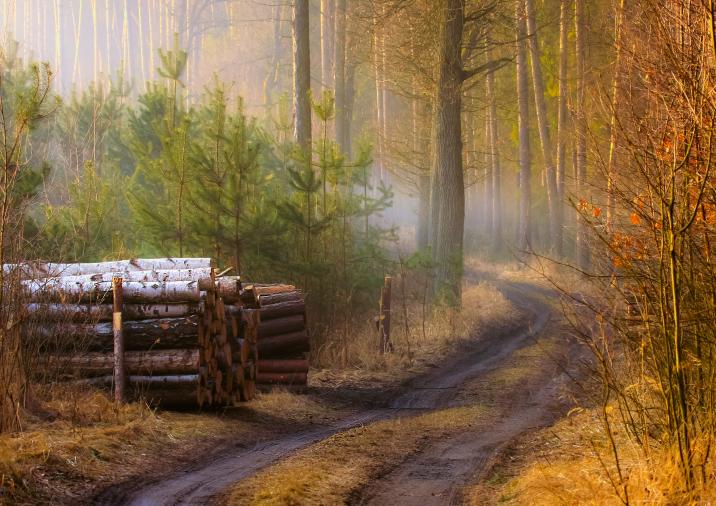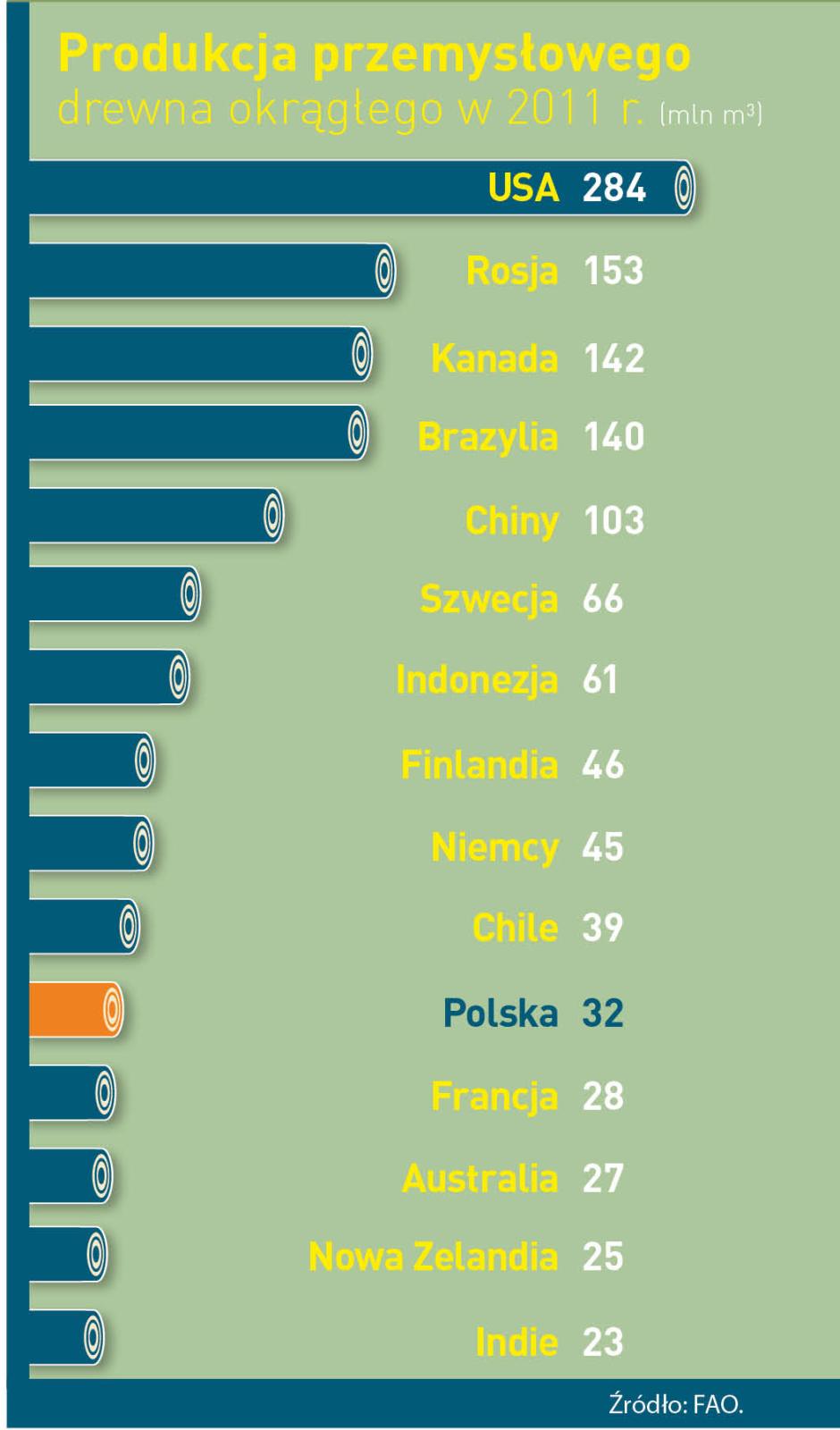 Asset Publisher
Asset Publisher
Polish hit
Polish products made of wood – furniture, window and door frames, yachts or paper and packages – these are real hits of the market.
Our country is the is the 10 largest producer of furniture and the 4 largest furniture exporter in the world. Wood industry sells abroad goods of its approximate value of 45 million zl annually, what constitutes 10 % of the whole Polish export. The measurement of the essential role of forestry and timber based sector in our management is that, it works out about 2 % of GDP (Gross Domestic Product). Not only it gives work to thousands of people, but it is also an engine of investment and of development of innovative technologies. From the beginning of transformation, it drew foreign capital of its value over 30 million zl.
Forest gives work
The State Forests belong to the leading group of employers in Poland. However, both forest and timber provide for workers with several thousand of Forestry Services Companies, which within the contract of mandate deal with, among others, planting trees and their nursing, wood logging and its transportation. And above all cooperate with people employed in several dozen thousand of companies creating wood and furniture industry and paper manufacture. Summing up, it gives as many as 375 thousand of Poles altogether. Statistically, every hundred inhabitant of our country works in the sector connected with forestry and wood processing.
Among private companies of forestry and timber based sector, there are also big companies with the share of foreign capital , and big and medium sized indigenous companies, but 9 of 10 companies in this sector are small plants employing less than 10 people. These are often family companies, cultivating multigenerational traditions connected with forestry and working in less developed regions of the country. There, forestry and wood industry, as well as agriculture constitute the basis of maintaining hundred thousand of families. As many as 600 % of all working places in the forest and wood based sector are located within rural areas.
Forest and wood based sector works out about 2 % of Polish GDP (Gross Domestic Product).
- 2 % of Polish GDP works out forest and wood based sector .
- Poland takes 4 place as the largest furniture exporter and 10 place as the largest producer of furniture.
- 50 % of paper and 9 of 10 pieces of furniture produced in Poland is exported abroad
- The value of annual export of Polish goods of wood and furniture industry and paper manufacture equals 45 billion zl (it is 10 % of the whole export).
- 30 billion zl , as direct foreign investments, have been drown since 1990 by Polish wood based sector (5,5 % of all).
- 100 kg of paper is used annually by statistic Pole (an average of UE is 160 kg, for USA – 230 kg).
Source: E. Ratajczak „Potencjał gospodarczy przemysłów opartych na drewnie i perspektywy ich rozwoju (Economic performance of wood – based industries and perspectives of their development)", GUS, Warszawa 2012.
 Asset Publisher
Asset Publisher
 Asset Publisher
Asset Publisher
Lasy nadleśnictwa
Lasy nadleśnictwa
Ogólna powierzchnia Nadleśnictwa wynosi wg stanu na 29.10.2024 r. 17915 ha, w tym powierzchnia leśna 17 153 ha.
Nadleśnictwo zostało podzielone na 12 leśnictw, przeciętna powierzchnia leśnictwa wynosi 1492,91 ha.
Charakterystyka przyrodniczo-leśna
Nadleśnictwo leży w Bałtyckiej krainie przyrodniczo-leśnej, dzielnicy Pobrzeża Słowińskiego, mezoregionie Równiny Białogardzkiej. Rzeźba terenu ukształtowana w czasie ostatniego zlodowacenia jest zróżnicowana, przechodzi od terenu równinnego do pagórkowatego. Wysokość nad poziom morza waha się od 30 m do 130 m. Stosunkowo długi okres wegetacyjny, duży opad, ciepłe lata i łagodne zimy sprzyjają produkcji leśnej. W związku z bliskością Bałtyku obserwuje się jego łagodny wpływ na klimat. Przeciętna temperatura roczna wynosi około 7 o C, przy rocznym opadzie około 790 mm. Okres wegetacyjny trwa średnio 240 dni. Niekorzystny wpływ późnych przymrozków często odbija się na jakości upraw. Obszar Nadleśnictwa pokrywają w przeważającej części piaski sandrowe z płatami piasków zwałowych i glin zwałowych. Wzdłuż cieków i zbiorników wodnych występują współczesne osady bagienne: torfy i mursze. Przeważającym typem gleby są gleby rdzawe zajmujące 71 % powierzchni. Ponadto występują gleby bielicowe 12 %, brunatne 4 % i gleby torfowo - murszowe 4 %.
Procentowy udział typów siedliskowych lasu
Dominującymi typami siedliskowymi są bory świeże, bory mieszane świeże i lasy mieszane świeże. Łącznie siedliska borowe zajmują 80 %, a lasowe 20 % powierzchni. Najliczniej występującym gatunkiem lasotwórczym jest sosna, zajmująca 84 % gruntów zalesionych, tworząca drzewostany jednogatunkowe, a na siedliskach żyźniejszych mieszane ze świerkiem, dębem, bukiem i brzozą. Udział gruntów porolnych wynosi około 50%. Drzewostany te są często lukowate i opanowane przez hubę korzeniową. Drugim gatunkiem co do powierzchni jest świerk - 5 %. Z cenniejszych gatunków występują buk 3 %, dąb 2 %, modrzew 1 % gruntów zalesionych.








